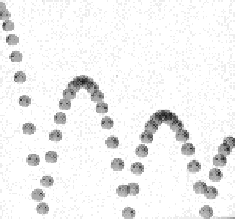
Physics 10: Concepts in Physics
Class meets MWF 2:00 to 2:50 PM, Warren Lecture Hall (WLH) 2005.
Discussion session meets Wednesday: 4:00 to 4:50 PM in WLH 2111.
Problem session meets Thursday 8:00 to 9:50 in Center Hall 212.
See
The UCSD Time Schedule for enrollment information.
Also see the
Academic Calendar for information on class dates and holidays.
Professor and Teaching Assistant Contact Info
Tom Murphy
SERF Buliding (930), Room 336, 534-1844
tmurphy@physics.ucsd.edu
Office hours: Thursday 1:00 to 2:30 PM
Office hours also by appointment (e-mail, phone, personal, drop by)
Jim Wilson
jawilson@physics.ucsd.edu
Office hours: TBA
Course Textbook
Conceptual Physics, Ninth Edition, by Paul G. Hewitt, Addison Wesley, San Francisco, 2001, is required for the course. Though the company has switched to a new edition, we'll stick with the old one so used books are available.The workbook that accompanies the textbook is not required for this course. I don't know if it is useful.
Students will be required to purchase a transmitter to interface with the voting system in place in the lecture hall (learn more about the transmitter). This will allow for interactive classes and also measure classroom participation (part of grade). The transmitters are available at the bookstore for $34 new, $26 used. At the end of the term, the used book tent sometimes buys back transmitters in working order (for about half-price). You must get one of the 13-button transmitters: the older 6-button transmitters will no longer work in this particular lecture hall. See the Transmitter Registration Instructions for how to register your transmitter for this class.
Here are instructions for the "clicker".
The goals of this class are:
Toward the first goal, you will each be asked to submit a bi-weekly question/observation about the world around us. For more information on this process, see the following description and examples of how this process works.
Recommended Books
Six Easy Pieces, Richard Feynman, Perseus Press, ISBN: 0201408252, 1995; An Overview of the Essentials of Physics, emphasizing atoms and quantum mechanicsHow the Universe got its Spots, Janna Levin, Anchor Books, 2002, ISBN: 1-4000-3272-5; Describes the cosmological revolution of the last 15 years
Energy, Second Edition, Gordon J. Aubrecht, Prentice Hall, 1995,
ISBN: 0023046015; A good overview of energy production and use of energy
in our lives
Light and Color in the Outdoors, M. G. J. Minnaert, L. Seymour,
Springer Verlag, 1993, ISBN: 0387979352; A classic book revealing the
richness of nature's myriad visual phenomena
Color and Light in Nature, David K. Lynch, William Livingston,
Cambridge Univ Press, ISBN: 0521775043; A modern version of Minnaert's
classic book
Relativity Visualized, Lewis Carroll Epstein, Insight Press,
ISBN: 093521805X, 1985; Hands-on relativity, including intuitive
reasoning behind speed of light limit, as well as the source of gravity.
Caveat: not 100% politically correct—maybe 98%.
Six Not-so-Easy Pieces, Richard Feynman, Perseus Press, ISBN: 0201328410, 1963;
Feynman again, on relativity and symmetry in physics
Before the Beginning, Martin Rees, Perseus Press, ISBN: 0738200336, 1998;
An up-to-date treatment of cosmology
Was Einstein Right?: Putting General Relativity to the Test,
Clifford M. Will, Harper/Collins, ISBN: 0465090869, 1993;
Einstein's theories and experimental approaches to verifying general
relativity
Powers of Ten website, based on the famous Eames production
Good physics intro website with a math refresher
NOVA (PBS) reference on Einstein and Cosmology
An Introduction to Particle Physics
The Elegant Universe NOVA series as aired on PBS. Describes string theory via QuickTime video clips.
Interactive Periodic Table of the Elements
An Introduction to String Theory (with a dot-com URL!)
Cow in Motion JAVA applet of one-dimensional motion
Story on the Future of Physics from the Economist magazine
Many thanks to Prof. Christopher Stubbs for his contribution to the content of this website.